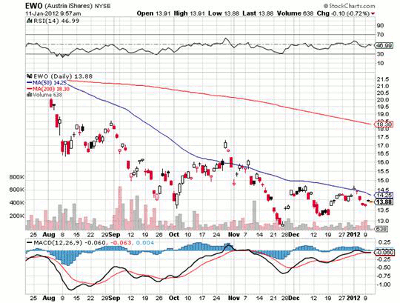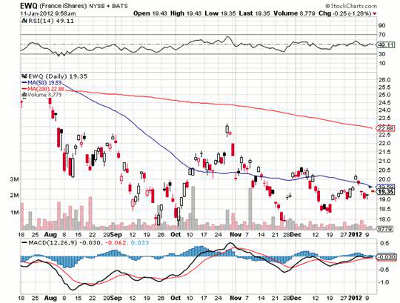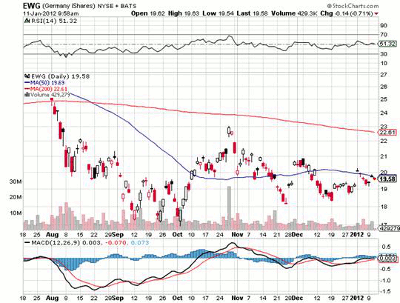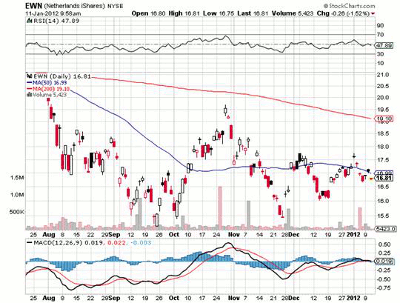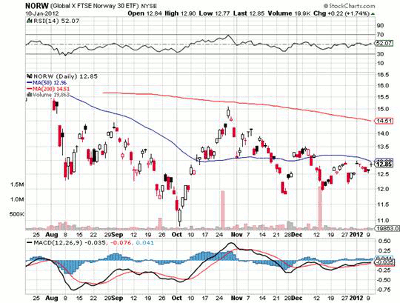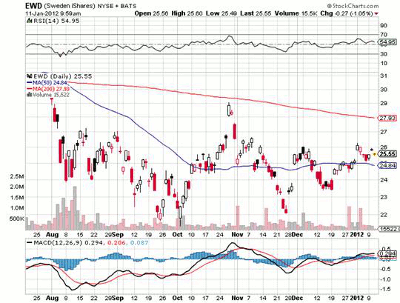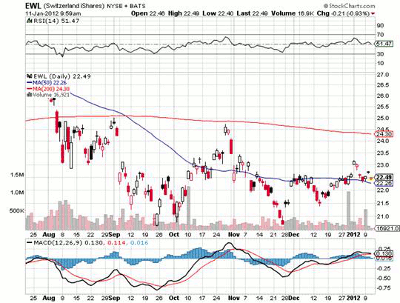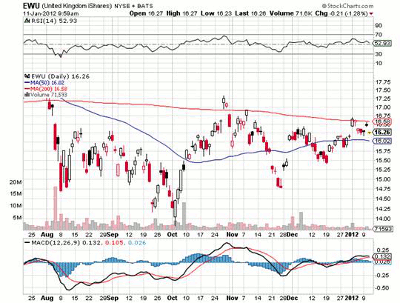Michael Johnston of ETFdb.com gives MoneyShow.com readers viable ways to capitalize on Europe’s most stable economies and stock markets using a variety of ETFs.
As most investors are painfully aware at this point, Europe is not in the best fiscal shape at present. The continent is in the midst of a prolonged debt crisis that is now threatening the continued existence of the euro, and has transformed the region into a sort of portfolio Kryptonite; most investors won’t go anywhere near it.
Much of the attention has focused on the handful of countries that maintain massive debt burdens that continue to grow, such as Ireland, Spain, and Italy. As the likelihood that these countries will be able to repay their debts deteriorates, their stock markets have been beaten down as international investors have fled to calmer markets.
Unfortunately, the debt crisis is hardly an isolated incident. A number of European economies, including several fairly large components, are struggling mightily to stay afloat.
Many European markets have seen the ratings assigned to sovereign debt by S&P slashed; Greece is currently rated CC, and several of its neighbors have experienced downgrades recently as well.
There are, however, a number of large European markets that maintain AAA ratings from S&P, meaning that they have a better score than the United States. Most of these economies are easily accessible to US investors through dedicated ETFs comprised of the largest public companies from each market:
iShares MSCI Austria Index Fund (EWO)
Austria has some of the highest debt yields among AAA-rated countries, but continues to hold on to a top score for the time being, at least. The EWO portfolio consists of about 35 different Austrian stocks and is extremely balanced from a sector perspective: materials, industrials, energy, financial services, and real estate each get an allocation of 10% or more.
iShares MSCI France Index Fund (EWQ)
EWQ offers access to about 75 French stocks, some of which should be well known to US-based investors. The portfolio is dominated by large-cap stocks, a common feature in international equity ETFs, but it is well balanced from a sector perspective. This ETF has lost close to 20% over the last year and is down about 35% over the previous five years.
NEXT: 2 German ETFs Worthy of Consideration
|pagebreak|iShares MSCI Germany Index Fund (EWG)
Germany continues to be one of the few bright spots in the Eurozone. The decline in the value of the euro has perhaps given a boost to the export-dependent market, but German stocks are certainly not a sure thing.
As one of the most stable economies in the region, Germany has been effectively assigned the role of fiscal savior to its smaller, cash-strapped neighbors. EWG consists primarily of large-cap German stocks, and several of the 50 or so individual holdings should be recognized by US investors: names like Siemens (SI), BASF (BASFY), Allianz (ALIZF), Daimler (DDAIF), and Deutsche Bank (DB) are all among the top ten positions.
Market Vectors Germany Small Cap ETF (GERJ)
Whereas EWG focuses primarily on large-cap German companies, GERJ focuses on smaller stocks with which most investors are likely not as familiar. This small-cap ETF has a unique sector breakdown compared to its large-cap counterpart, with industrials (27%), basic materials (19%), and consumer discretionary (16%) getting the largest allocations.
GERJ, which has about 100 individual components, is not quite as top-heavy, either; the largest allocation makes up only about 5% of total assets.
NEXT: 2 Small But Stable Euro Nations
|pagebreak|iShares MSCI Netherlands Index Fund (EWN)
The Netherlands is one of the smaller economies in Europe, and has managed to maintain relatively stable fiscal footing throughout the debt crisis thanks to strong employment numbers and a significant current accounts surplus.
EWN, which has only about $55 million in total assets, consists of about 60 total stocks, but the majority of assets are represented by just a handful of them. In addition to Unilever (UL) (21% of assets), financial giant ING Groep N.V. (ING) (11%) makes up a big chunk of this ETF. Also found in the top five is beer maker Heineken (HINKY) (about 5% of assets).
Global X FTSE Norway 30 ETF(NORW)
Norway isn’t part of the Eurozone, a distinction that has no doubt been beneficial to NORW in recent months. Thanks to an abundance of oil and other natural resources, Norway has been able to stave off the debt crisis that afflicts its neighbors to the south and emerge as one of the best opportunities for growth in the region. The relatively young NORW, not surprisingly, has a tilt towards the energy sector; oil stocks make up almost half of this fund.
NEXT: 2 Neutral Nations with Less Risk
|pagebreak|iShares MSCI Sweden Index Fund (EWD)
Sweden has similarly benefited from its decision to remain separate from the Eurozone, and EWD has performed relatively well over the last several years (though it is down about 15% over the last year, this ETF is up an impressive 70% over the past three years).
This ETF also features some sector tilts, as industrials and financials combine to make up about half of the underlying portfolio. Sweden continues to move away from a social welfare model, and the country’s debt totaled only about 32% of GDP at the end of 2011.
iShares MSCI Switzerland Index Fund (EWL)
Switzerland, known for its neutrality in international politics, has been in the economic spotlight recently due to the appeal of its currency. The Swiss franc emerged as a popular safe haven in 2011, prompting the country’s central bank to step in to curb its sudden appreciation.
EWL is close to breakeven over the last five years—a remarkable accomplishment considering that many of its neighbors are deep in the red. The underlying portfolio includes big allocations to Nestle (NSRGY) (23%), Novartis (NVS) (13%), and Roche (RHHBY) (13%), with those three stocks making up almost half of the fund’s total assets.
iShares MSCI United Kingdom Index Fund (EWU)
Continuing a theme on this list, the United Kingdom is also in relatively good position thanks in part to its currency independence. One of the world’s largest economies, the UK is not without its own challenges at present. Unemployment remains elevated, and the debt burden is well north of 50% of GDP.
EWU has about 100 holdings and is relatively balanced in nature; no one stock accounts for more than about 6% of assets. The portfolio is full of some well-known multinational firms, including HSBC (HBC), BP plc (BP), Royal Dutch Shell (RDS-A), Rio Tinto (RIO), and BHP Billiton (BHP) are all among the ten largest individual allocations.
By Michael Johnston of ETFdb.com


